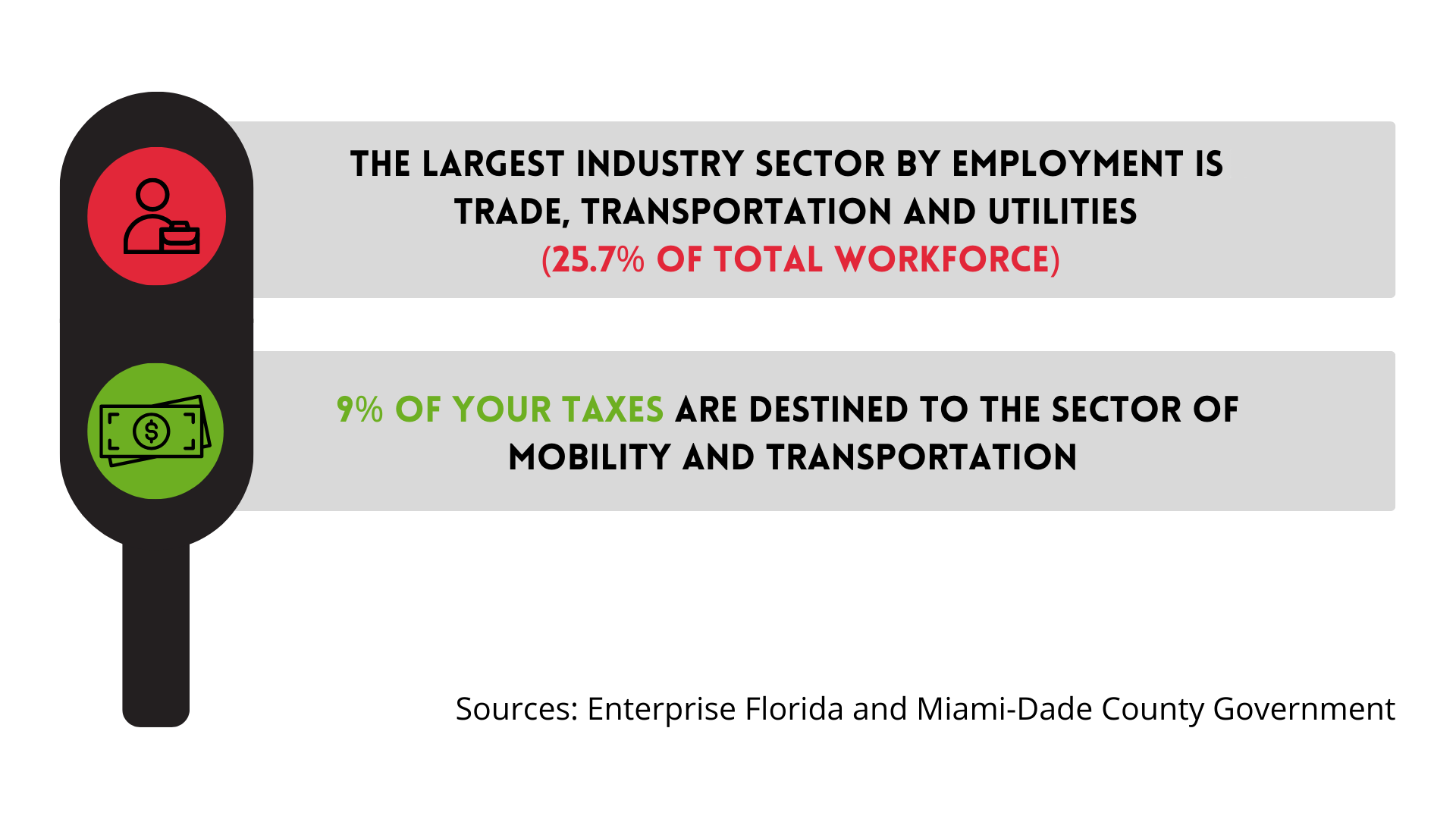Arriving: Never
Getting from place to place in Miami is a struggle for locals and tourists alike.

Miami ranked as one of the 10 worst cities to drive in according, a report by INRIX. (Photo by David Chavez)
Published on May 30, 2024
“Traffic is bad.”
This is how former Miami Beach Mayor Dan Gelber simplified the issue of mobility in South Florida during his State of the City address in January of 2023. Residents could not agree more.
Getting from place to place has been a struggle for locals and tourists alike – public transportation options are limited, and unreliable, heavy urban traffic leads to gridlocks and accidents, and “rush hour” seems infinite.
To address the issue, the state of Florida is seeking to make improvements to its public transportation system. This year, Miami-Dade County has received $16.7 million in federal earmarks for projects supporting critical roadway improvements and Vision Zero safety initiatives —a program that focuses on eliminating traffic fatalities. However, these efforts have proved insufficient.

It is true that the ‘drive-thru’ culture rooted in the American lifestyle has also been blamed for what some consider to be the inefficient design of the metro rail system in Miami. Other cities in the United States, such as Chicago, utilize a wider network of public transit. In fact, one can find examples of wider and considerably more efficient transit systems in Asia, Europe, South America and Oceania.

For many, most of the public transit projects launched by the state are inadequate. The best example to portray this is the named “Better Bus Network”, a project launched in November 2023 which was presented as the first major redesign of Miami’s bus routes in almost 40 years. However, the plan that was designed to improve the public transport system only disappointed riders and transit workers. An article by 7News Miami highlighted issues raised by residents, pointing out that it made public transportation even worse than it already was. Even though the response from Miami-Dade County’s Department of Transportation tried to calm bus users anticipating upcoming changes, the situation has still not been solved.
This issue does not only affect Miami’s residents who try to reach their workplaces in a reasonable amount of time every day, but also the millions of tourists who visit the city every year. For instance, in order to go and see well-known places like the Art Deco in Miami Beach or the Hard Rock Stadium, tourists and residents have to walk for more than an hour from the closest train station, often within temperatures that exceed 86ºF. And the bus service in which people must wait 20-30 minutes for a rather slow means of transportation is not an option either.
Distance between popular landmarks and the nearest train station
The selection of these landmarks has been based on sites designed for tourists that pinpoint essential places for travelers (such as “Everglades activities”) but we have also included recommendations made by residents who wanted to share special spots they know or consider relevant.
The Miami-Dade County Transportation and Public Works website outlines a plan to “expand and enhance Miami-Dade County’s public transportation infrastructure.” It aims to develop “five rapid transit corridors” by 2025 through a “comprehensive, proactive” vision. But implementation has been slow, and it does not address the issues facing today’s travelers, who are forced to use an expensive alternative to make it to their destinations: Uber.
More: Behind the Wheel

Who is truly behind the wheel when public transport fails? Meet a few of the drivers who keep Miami on the move.